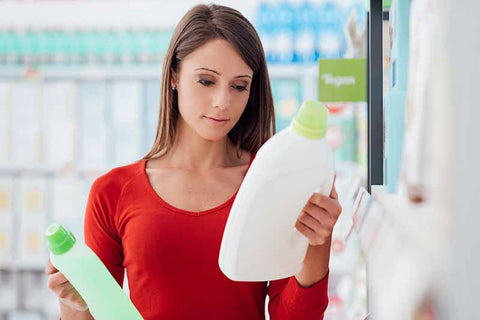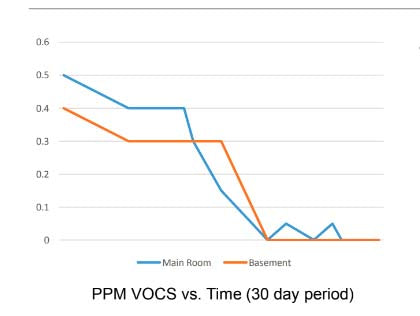
10 Ways You Can Create a Healthier Home
A reader asked about How to Create a Healthier Home. This is a big topic, but there are some good places to start, some involving cleanup and some prevention.
Here’s a list of some suggestions:
1. Use Water Filters for Your Drinking Water and Shower
There are lots of types of water filters to suit your needs, from small, portable filters for drinking water, filters that can attach to shower heads, and larger filtration systems that will filter water in all areas of the house. You can see our recommendations for filters here, as well as detailed guidance and explanations on how each one works.
2. Let the Fresh Air In
Open your windows frequently to let fresh air in your home. Unless you live in a very polluted place, indoor air is typically more polluted than outdoor air.
3. Be Aware of Mold
Ensure that your home is free of mold. 25% of the population is easily sickened by mold spores and the mycotoxins, which are neurotoxins, released by mold. Even if you cannot see mold, any musty smell is mold.
Mold can be found behind walls and in crawl spaces, so it may not be visible.
4. Watch Out For Fragranced Products
Avoid fragranced products: cleaning products, air fresheners, perfume, laundry detergent, laundry sheets, scented candles. Anything with “fragrance” listed on the label can be potentially harmful and can cause severe allergic reactions.

Unfortunately, in the US, consumer products don’t have to list the ingredients so you may not know that the product contains fragrances. Plus, sadly “unscented” products may contain fragrance to mask the product smell.
There’s a lot more to this topic, but avoiding fragrance is a great start. Check out our blog articles on safe laundry and cleaning products to get an in-depth look at how fragrance can affect you and what kinds of products are better options for your health.
5. Do Your Research When Remodeling
Do research before major renovation or remodeling projects. Make sure you use "no VOC" or "low VOC" paints, stains and polyurethanes. Look for CARB compliant woods. Try to buy wood furniture made with solid wood rather than pressed or composite wood.
If you can’t avoid buying cabinets or other furniture made with pressed or composite wood that contains formaldehyde, then stagger the purchases, keep your humidity low and the temperature on the cooler side. It’s important to ventilate the rooms and to consider using an air purifier.
Our air purifier guide gives you all the information you need to learn about possible toxins in your indoor air, and what kinds of air filtration systems will clean your air up the most and best fit your needs. The Austin Air HealthMate Plus is specially designed to remove common household VOCs like formaldehyde and benzene, so this is a great product to invest in if you’re remodeling.
If an air purifier isn't for you, then consider using an HVAC filter that removes VOCs. The EnvironKlenz air cartridges replace your existing air filter cartridge in your HVAC system and are tested to reduce common household VOCs like formaldehyde.
See the results below. The chart shows VOC reduction using an EnviroKlenz HVAC Filter over 30 day period inside a house and basement that had high levels of VOCs measured in PPM (parts per million). Over a 15 day period, the EnvironKlenz reduced the VOCs levels and kept them low.

6. Be Smart About Chemical Flame Retardants
Be smart about chemical flame retardants which are toxic, bio-accumulate and are persistent. Invest in mattresses without chemical flame retardants. If you can’t afford a mattress that is naturally flame retardant, then some companies will make a conventional mattress without chemicals with a doctor’s note.
Limit electronics especially in children’s rooms because electronics contain chemical flame retardants.
DUST & VACUUM! Chemical flame retardants settle into household dust, so dusting and vacuuming with a HEPA filter vacuum will really help.
7. Choose Cleaning Products Carefully
Many cleaning products contain harmful chemicals and fumes. Try baking soda or vinegar mixed with fresh lemon juice for cleaning. The granules in baking soda make it an ideal choice for scrubbing, and it also absorbs odors.
Vinegar also absorbs odors and can be used to clean coffee makers (and any other appliances that use water and may be affected by poor water quality or calcium buildup), kitchens, and bathrooms. There are safer cleaning products that don’t use harsh chemicals; you can check out some of our recommendations like MamasSuds for soaps, laundry, and all-purpose cleaning.
8. Avoid the Worst Ingredients in Self-Care Products
Double check the ingredients in your makeup, self-care, and cleaning products. Some of the products you think are safe might contain harmful chemicals, so make sure to find products that really list ALL of their ingredients, look for products that mostly list plant based ingredients for their product, and avoid using products that contain the following chemicals:
- Trisclosan & Triclocarban – Disrupts thyroid and hormones.
- Parabens – Avoid especially Propyl-, Isopropyl, Butyl, and Isobutyl-Parabens. Disrupts thyroid and causes reproductive and developmental disorders.
- Phthalates – Increasingly linked to brain, behavioral changes, cancer and reproductive system harm.
- Fragrance – Can include any one of 3,000+ ingredients – many synthetic, petroleum-based and toxic. Some formulations include phthalates.
- Formaldehyde or Formalin – Known carcinogen, asthmagen, and neurotoxin.
- Boric Acid & Sodium Borate – Can be absorbed readily into the body and are unsafe for infants and use with broken skin.
- PEG/Cetearet/Polyethylene – Frequently contaminated with 1,4-dioxane a probable carcinogen.
- Coal Tar Hair Dyes + Aminophenol, Diaminobenzene, Phenylenediamine –Coal tar is a known carcinogen.
- Oxybenzone – Human studies link to irritation and allergies. Animal studies show hormone disruption.
9. Reduce Allergy Problems
Be aware of what kinds of allergies you have and what products will help reduce those allergies or aggravate them. Unfiltered water, mold, dust, fragrance, harsh cleaning products, bedding and self-care products, can all contribute to allergy problems you or your family have. Also, be wary of the term “hypoallergenic.” Just like with products labeled “green” or “all-natural,” hypoallergenic is not a regulated term, companies are not required to do third party testing on hypoallergenic products’ effectiveness, and it’s mostly a marketing tactic.
10. Live with Plants
Include plenty of plant life inside and outside your home. Plants can help filter your air since they absorb CO2, and they are stress reducing.

You don’t need a green thumb to make plants like mint (make sure to keep this one in a pot since mint can become invasive in a regular bed), basil, or rosemary flourish. These are very fragrant, low-maintenance plants that can also be used in many recipes and drinks. Plus, if you’re growing plants you intend to eat, you don’t have worry about whether pesticides or unsafe fertilizers have been used on your food.
Start Your Journey Toward Peace of Mind
Working your way to a cleaner, healthier home can be hard, but Purelivingspace.com gives you the information and tools that will help you get started. This list isn’t a to-do list, it’s a journey toward peace of mind.


